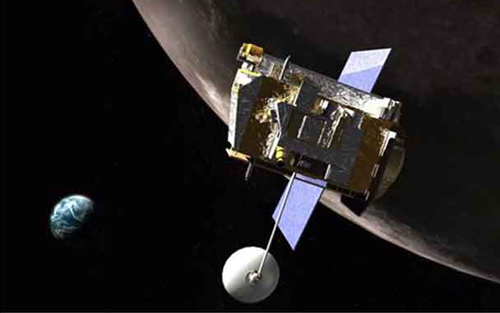Lunar Reconnaissance Orbiter (LRO)
The Lunar Reconnaissance Orbiter (LRO) is an ongoing NASA mission dedicated to understanding the lunar surface environment and preparing for future human lunar explorations. Since the beginning of its science operations in September 2009, LRO has been advancing lunar science as NASA’s premier lunar mapping mission. Some of LRO’s most notable science results include improved age dating of lunar craters/surface features, identification of young volcanic features, and observations of volatiles released from Cabeus crater during the LCROSS impact. One of LRO’s most important science targets is the lunar South Pole, where it has identified and mapped permanently shadowed regions (PSRs), which are some of the coldest and darkest areas in the solar system.
Lyman-Alpha Mapping Project (LAMP)
The Lyman-Alpha Mapping Project (LAMP) is the SwRI led and built far-ultraviolet (far-UV) spectrograph onboard LRO that is making significant progress in far-UV spectroscopy and lunar science. LAMP measures far-ultraviolet reflected light of the lunar surface. Using background light from far-ultraviolet bright stars, LAMP is able to “see in the dark” and look into permanently shadowed regions (PSRs) at the South Pole. Using the Sun as another illumination source, LAMP can also map young rayed craters and other features in the far-ultraviolet. Supporting laboratory work is conducted by SwRI’s Center for Laboratory Astrophysics and Space Science Experiments (CLASSE).


